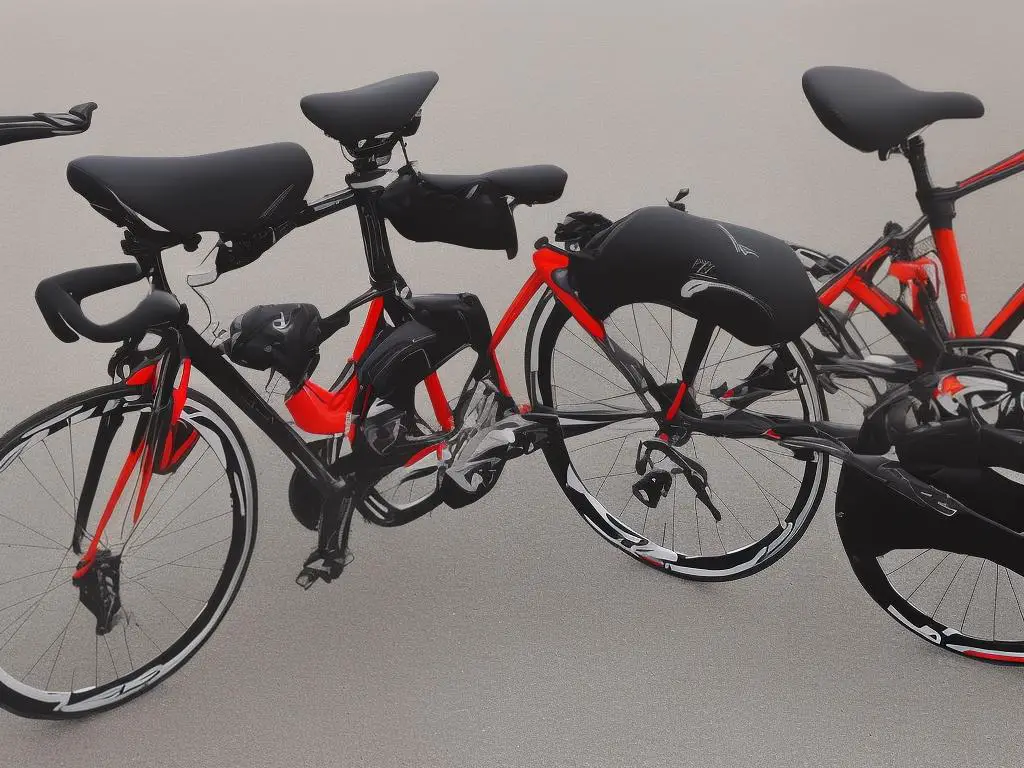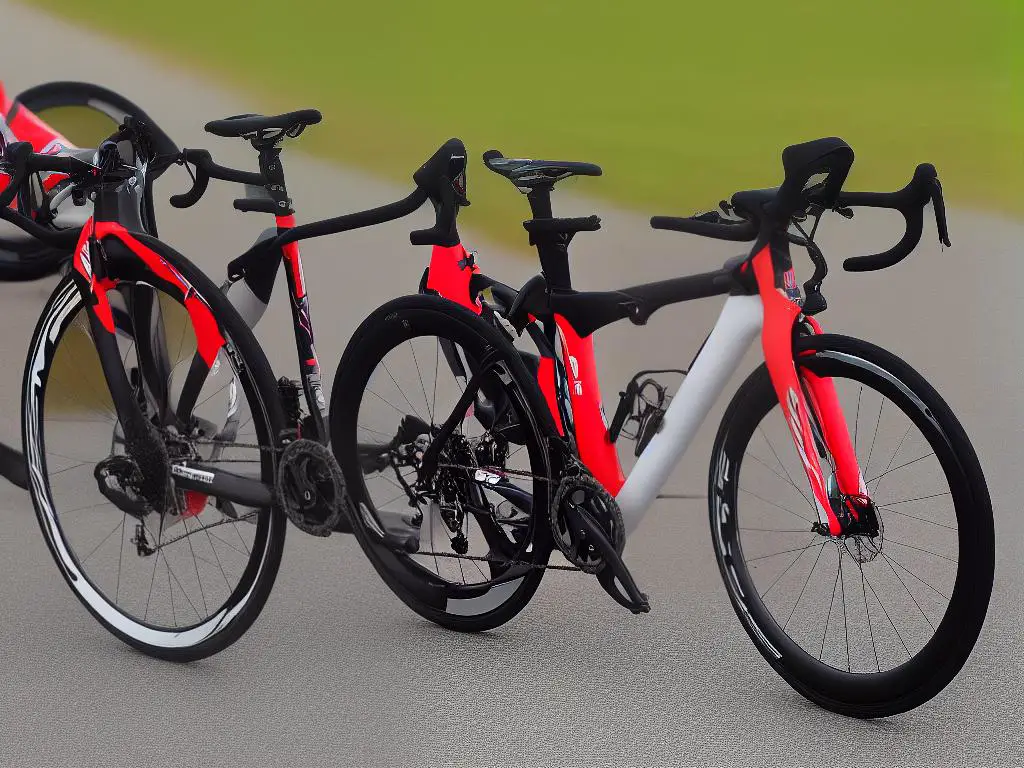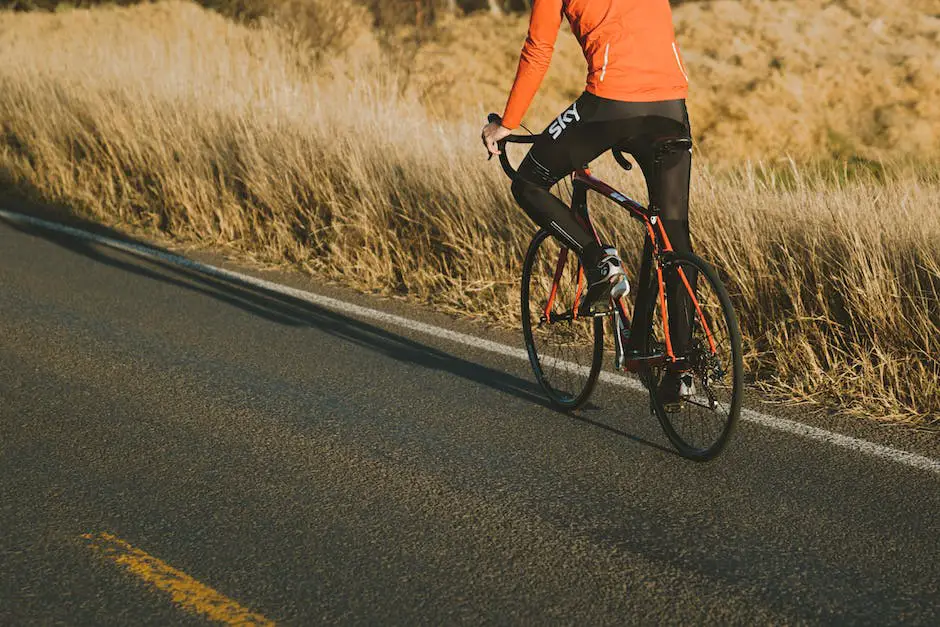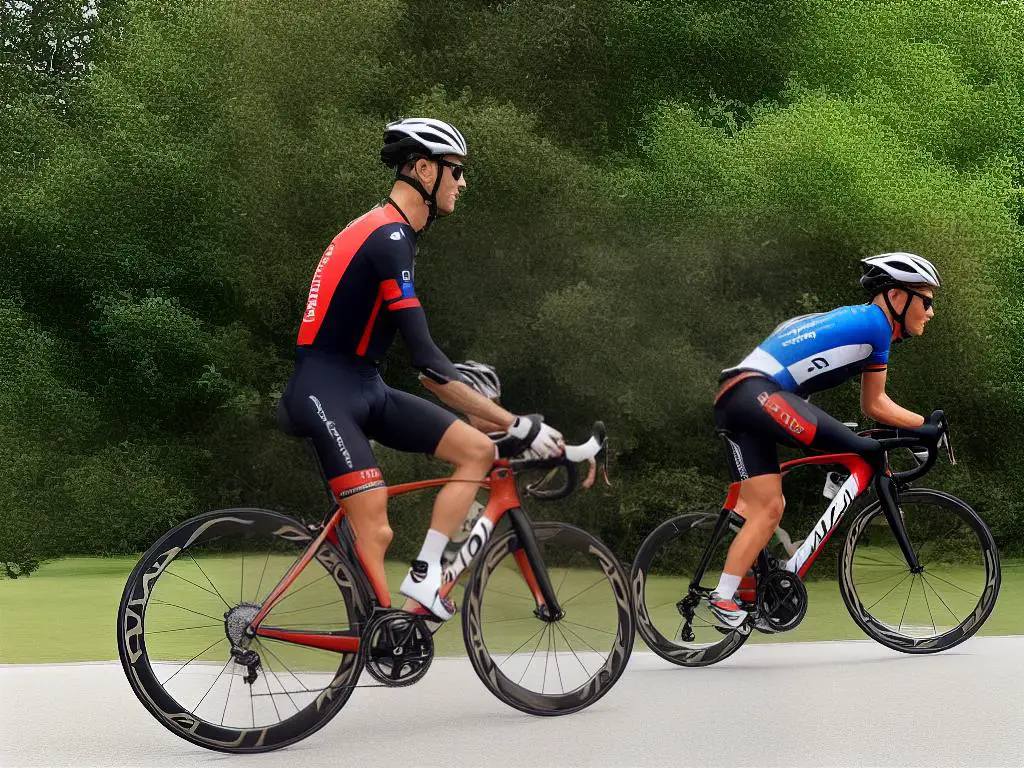Ultimate Guide to Saddle Comfort for Returning Cyclists
As the saying goes, the bicycle is only as comfortable as the saddle it carries. For returning cyclists or those who have been away from biking for some time, finding the perfect saddle is crucial for not only enhancing riding experience, but also for preventing common saddle-related discomforts. This in-depth article will provide valuable information on saddle types, materials and construction, width measurements, seat adjustments, and pain reduction strategies, as well as break-in periods and maintenance tips, to ensure a smooth and enjoyable re-entry to the world of cycling.
Understanding saddle types
One of the key aspects to consider when returning to cycling is saddle comfort, which can significantly impact your overall experience and enthusiasm for the sport.
Racing saddles
This style is typically lightweight, streamlined, and provides minimal padding. While the weight reduction can offer a slight advantage for avid racers, inexperienced or returning cyclists may find racing saddles to be less comfortable and more challenging to get used to, especially on longer rides.
Touring saddles
Designed for long distance cycling and prioritize comfort for extended periods in the saddle. These saddles usually have a wider shape and more padding than racing saddles, helping to provide additional support and better weight distribution for the rider.
Comfort saddles
Often specifically designed for recreational cyclists and prioritize cushioning and support. They are typically wider and have more padding than racing or touring saddles, sometimes even including gel inserts or springs for shock absorption. Some comfort saddles also feature an ergonomic design or central cutout, which can help to reduce pressure on sensitive areas and improve overall comfort during rides.
It is important to note that comfort saddles may not be the best option for those intending to cycle at higher speeds or engage in more aggressive riding styles.
Selecting the appropriate saddle type is crucial for returning cyclists prioritizing comfort and enjoyment during their rides.
The pros and cons of each type, from the lightweight and streamlined racing saddle to the cushioned and supportive comfort saddle,
should be carefully considered in relation to the individual’s riding style and preferences.
The key to a successful return to cycling lies in finding the right balance of comfort, support, and performance tailored to the individual rider. A major factor in achieving this balance is the selection of an appropriate saddle that caters to the rider’s preferences and needs.

Materials and construction
The materials used in bicycle saddle construction play a significant role in ensuring comfort for returning cyclists. Common materials such as leather, foam, and gel each have their own benefits and drawbacks. As a cyclist reintegrates themselves into the sport, it’s crucial to understand how saddle materials and construction can impact overall comfort. This knowledge will allow riders to make informed decisions when selecting a saddle that best suits their requirements and preferences.
The Benefits and Drawbacks of Leather Saddles
Leather saddles have been a popular choice for cyclists for many years, providing a natural, breathable material that molds to the rider’s body over time. This molding process creates a custom fit for the individual, making it a highly comfortable option after a proper break-in period. However, leather saddles often require additional maintenance compared to other materials, such as regular conditioning and protection from moisture. Returning cyclists seeking a classic, tailored saddle may find leather to be the right choice, but they should be prepared for the initial stiffness and need for maintenance.
The Lightweight and Supportive Nature of Foam Saddles
Alternatively, foam saddles have become a popular choice due to their lightweight construction and ability to provide firm support. Foam varies in density across different saddles, offering options for cyclists who prefer firmer or softer levels of support. High-quality foam saddles can retain their shape and support over time, making them a more durable option than cheaper foam alternatives. For returning cyclists who desire a lightweight and low-maintenance saddle that offers consistent support, foam saddles may be an attractive option.
The Unique Comfort of Gel Saddles
Gel saddles offer a unique blend of comfort and support for returning cyclists seeking a saddle that conforms to their body shape. By utilizing a gel insert, these saddles can distribute pressure and absorb road vibrations more effectively than traditional foam or leather saddles. However, the softness of the gel may cause some cyclists to experience discomfort or chafing on longer rides when compared to firmer saddle materials. Returning cyclists interested in gel saddles should consider their typical ride duration and personal preferences for cushioning before making a choice.
Considering Saddle Construction for Comfort
When selecting a saddle for returning cyclists, it’s essential to prioritize a perfect balance between materials, construction, and the individual’s specific comfort needs. The saddle’s shape, width, and curvature greatly influence how a cyclist interacts with the bike, ultimately impacting comfort levels. Cutouts and grooves in the saddle can help improve comfort by alleviating pressure on sensitive areas. Furthermore, the rails that attach the saddle to the bike can provide varying levels of shock absorption, depending on their material and construction.

Finding the right saddle width
One critical aspect of ensuring saddle comfort is finding the right width to provide optimal support and prevent discomfort during rides. Measuring your sit bone width is essential in choosing the most suitable saddle for your anatomy. Sit bones, or ischial tuberosities, are the bony protrusions at the base of your pelvis that make contact with the saddle when you sit on a bike. Proper alignment of the sit bones ensures pressure is evenly distributed across the pelvis, reducing the risk of pain or numbness. Proper saddle width selection, combined with carefully considering the construction, will lead to a comfortable and enjoyable cycling experience for returning riders.
To measure your sit bone width, you can use a simple at-home method or visit a local bike shop for assistance. For the at-home method, place a sheet of tin foil on a flat, firm surface like a bench, stool, or stairs. Then, sit firmly on the foil, ensuring that your weight is distributed evenly across your sit bones. Lean forward slightly, as if in a cycling position, and hold for a few seconds. Afterward, inspect the foil for two distinct depressions where your sit bones made contact. Measure the distance between the centers of these two points, and you have your sit bone width.
Selecting a saddle with the appropriate width will greatly improve comfort and support while cycling. Generally, saddles are available in narrow, medium, and wide options, but you can also find specialized saddles designed specifically for different sit bone widths. As a general rule, try selecting a saddle that is approximately 20mm wider than your measured sit bone width. This allows for proper weight distribution and minimizes pressure points.
Moreover, the overall shape and design of the saddle should also be considered, as these factors can contribute to your comfort over long rides. Some saddles feature a cut-out in the center, which helps alleviate pressure on the perineal area. Others have a more pronounced curve, offering better support for those with wider sit bones. It’s important to try out different saddle types to find one that provides the best comfort and support for your specific anatomy.
As an enthusiast or hobbyist, it’s important to understand that saddle comfort is subjective, and finding the right fit might involve some trial and error. Don’t be disheartened if your initial selection isn’t perfect; just give your body time to acclimate to a new saddle. If you’re uncertain about your measurements or the most suitable saddle type for your needs, consult with professionals at a bike shop who can offer expert guidance and fitting services. Devoting time and effort to determine the perfect saddle width is a valuable investment in improving your cycling experience, making it more enjoyable and comfortable for returning cyclists.

Seat adjustment and positioning
Another crucial aspect of achieving saddle comfort for returning cyclists is the proper adjustment and positioning of the seat. Fine-tuning saddle height, angle, and fore-aft position is essential not only for optimal comfort but also for efficient pedaling. Additionally, improper seat adjustments can cause discomfort, pain, and even injuries. Therefore, acquiring and applying the knowledge of step-by-step instructions to ensure proper seat setup for each individual cyclist is an integral part of enhancing their overall riding experience.
The first step in seat adjustment is to find the correct saddle height. Optimal saddle height allows for slight bending of the knee when the foot is at the bottom of the pedal stroke. To set the correct height, place one heel on the pedal at its lowest position while sitting on the saddle, and adjust the saddle height until the knee is fully extended but not locked. This will allow for a slight bend in the knee when the foot is in its proper pedaling position with the ball of the foot over the pedal axle.
Next, adjusting the saddle angle is essential for minimizing pressure points and evenly distributing the rider’s weight. To ensure the correct angle, the seat should be levelled with the ground. Cyclists can utilize a spirit level or a smartphone bubble level app to make this adjustment. However, personal preferences may lead some cyclists to make minor adjustments to the angle, slightly tilting the nose of the saddle up or down for increased comfort.
Thirdly, achieving the proper fore-aft saddle position aids in effective power transfer and pedal stroke efficiency. To do this, sit on the bike with the pedals in the horizontal position (3 o’clock and 9 o’clock). Drop a plumb line or a weighted string from just below the kneecap of the forward leg; the line should intersect the center of the pedal axle. If the line falls forward or behind the pedal axle, adjust the saddle forward or backwards, respectively, until the plumb line aligns with the center of the pedal.
Last but not least, it is important to remember that each cyclist is unique, and seat adjustments may need to be fine-tuned over time as riding habits and preferences evolve. Returning to cycling may involve adapting to a new saddle or cycling position. Thus, periodic evaluations and adjustments to saddle height, angle, and fore-aft position will help maintain comfort and maximize performance. Understanding the principles behind these adjustments allows the returning cyclist to customize their saddle comfort and thoroughly enjoy their cycling experience.

Reducing saddle pain and discomfort
As an enthusiast or hobbyist interested in saddle comfort for returning cyclists, it’s important to know that selecting the right saddle is crucial in alleviating pain and discomfort. Bicycle saddles come in a variety of shapes, sizes, and materials, designed to cater to the unique needs and preferences of riders. Look for an ergonomic and supportive saddle with a cutout or indentation to relieve pressure on the perineum. It may take some experimentation with different saddles to find the best match for your body type and riding style.
Another essential element in addressing saddle-related issues is proper bike setup. Make sure the saddle is at an appropriate height, allowing your knees to have a slight bend when the pedal is at its lowest point. Start with a level saddle and make slight adjustments to find the ideal tilt for maximum comfort. Wearing bike shorts with quality padding and applying chamois cream can significantly reduce chafing and numbness, especially during long rides.
A proper riding position is also crucial for saddle comfort. Maintain good posture while cycling to reduce pressure on the sit bones and avoid numbness. Your back should be slightly arched, not hunched over, with weight evenly distributed between the handlebars and saddle. Minimize leaning forward too much to reduce stress on both your hands and pelvis. Experiment with your riding position to find the most comfortable and efficient posture.
Incorporating saddle breaks into your rides can help alleviate discomfort as well. Take short breaks to stand up and stretch your legs, improving blood flow and reducing pressure on the perineum area. Include standing intervals in your cycling routine for temporary relief from extended periods of sitting on the saddle.
Lastly, when returning to cycling, gradually increase your riding time to help your body adjust to extended periods on the bike. This will reduce discomfort and allow you to enjoy your rides more.

Break-in period and saddle maintenance
Understanding Saddle Comfort for Returning Cyclists
One important aspect of saddle comfort for returning cyclists is getting used to the break-in period for a new saddle. Similar to breaking in a new pair of shoes, a bicycle saddle needs time to conform to the rider’s body shape and reach maximum comfort levels. During the break-in period, the saddle’s materials will soften and mold to your unique anatomy, creating a more personalized and supportive fit. It’s crucial that returning cyclists remain patient during this process, as the break-in duration may vary depending on factors like saddle material, riding style, and how often you ride.
Proper Saddle Maintenance
In addition to the break-in period, proper saddle maintenance plays a significant role in ensuring long-lasting comfort for returning cyclists. Regular cleaning and inspection of the saddle will not only help to preserve its appearance but also identify potential signs of wear and tear that may affect the overall support and cushioning. By addressing these issues early on, cyclists can prolong the life of their saddle and ensure a consistently comfortable riding experience.
Another key aspect of saddle maintenance involves checking and adjusting the saddle height and tilt. As cycling enthusiasts build strength and flexibility, they may find that their optimal saddle position changes over time to accommodate new riding styles or physiological changes. Regularly evaluating and fine-tuning saddle height and angle can significantly enhance comfort and prevent strain or injury over time.
Riders who use a leather saddle should also consider incorporating leather-specific maintenance routines into their regular saddle care. Leather saddles often require breaking-in and ongoing treatment to maintain proper suppleness and avoid premature cracking or degradation. Utilizing leather conditioners and proofing agents can help to preserve the saddle’s integrity while also ensuring ongoing comfort and support for cyclists.
Conclusion
When returning cyclists invest time and effort into understanding and executing proper saddle break-in procedures and maintenance, they can enjoy long-lasting comfort and performance benefits. These practices extend the useful life of the saddle and contribute to a more comfortable overall cycling experience. By prioritizing break-in periods and ongoing saddle care, riders can maximize both comfort and enjoyment, helping to foster a lasting enthusiasm for the sport of cycling.

In essence, saddle comfort is paramount in making cycling enjoyable and pain-free for returning riders. By understanding saddle types, being knowledgeable about materials and construction, finding the right width, adjusting the seat correctly, and following helpful tips for reducing pain and discomfort, cyclists can confidently get back on the saddle and rediscover their love for biking. Furthermore, mastering the break-in period and regularly maintaining the saddle will ensure its longevity and support, allowing for countless rides filled with comfort and pleasure. Happy cycling!
